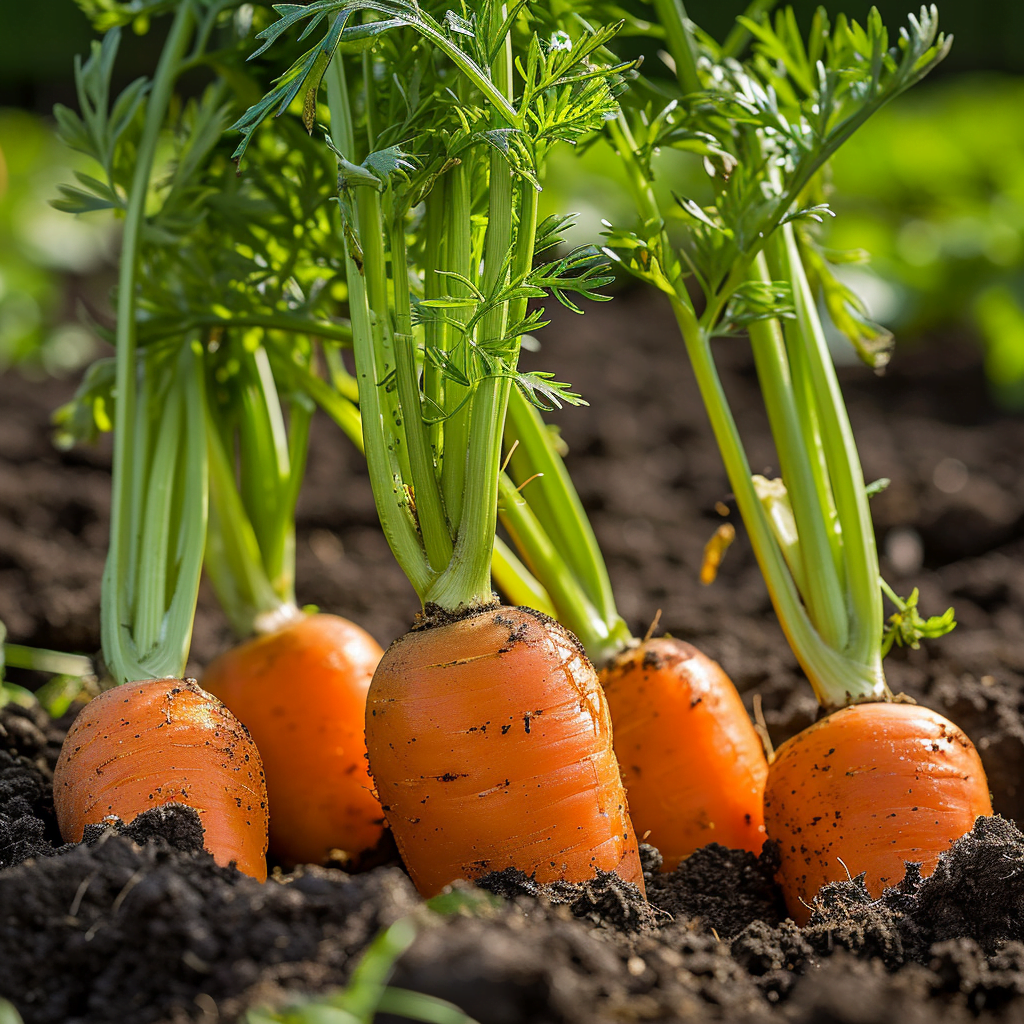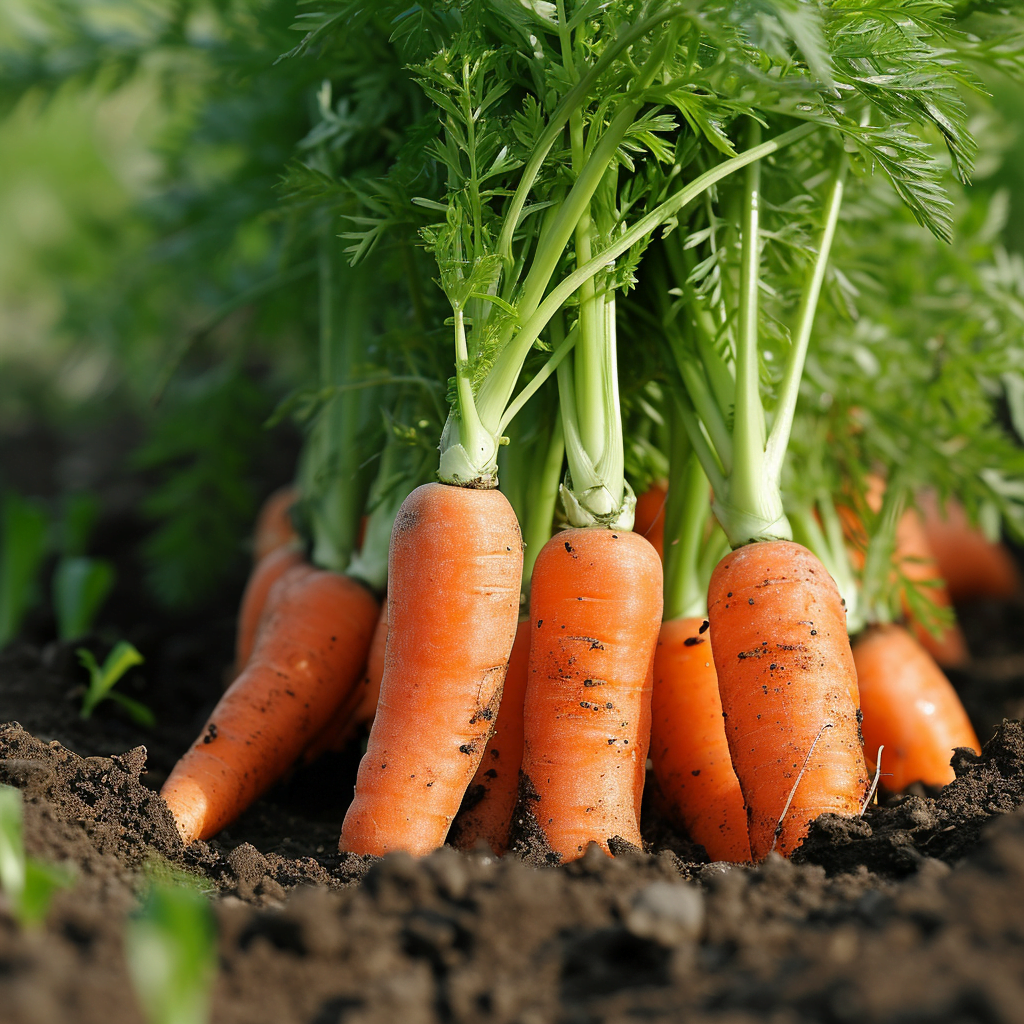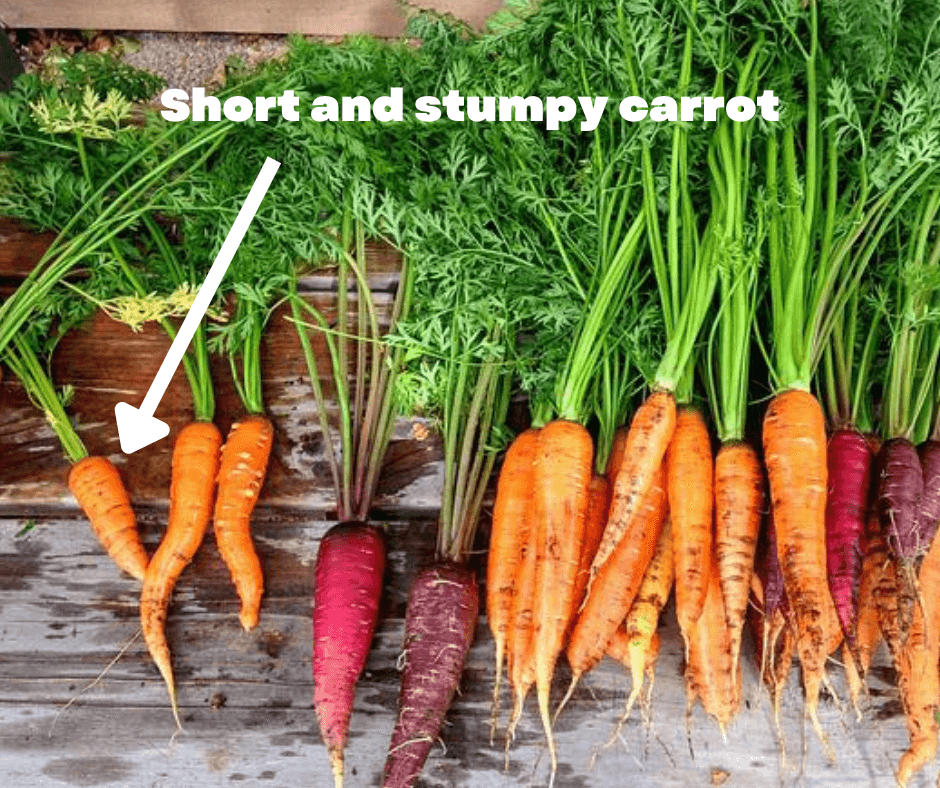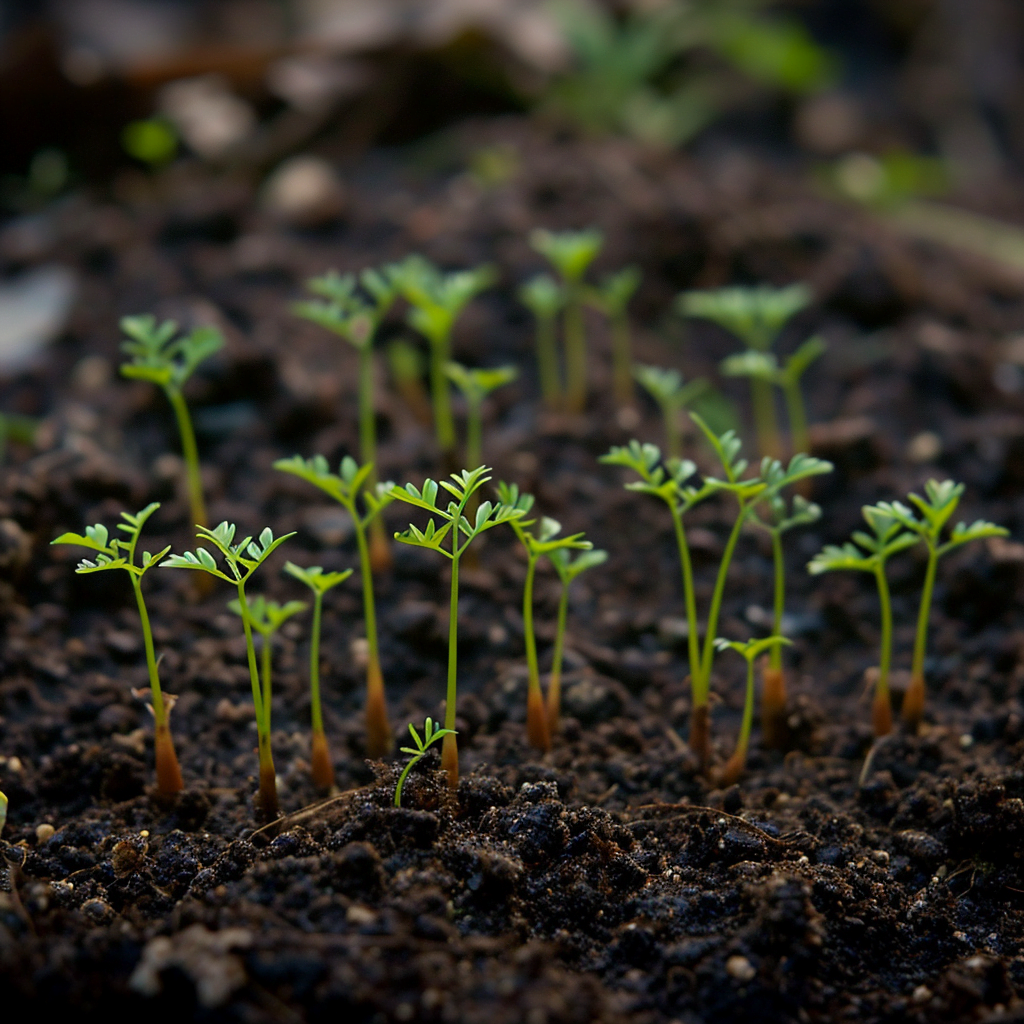Growing carrots at home can be a rewarding and enjoyable experience. Whether you have a spacious garden or a small balcony, carrots are a versatile vegetable that can thrive in various growing conditions. This article answering the question “Are Carrots Easy To Grow?” will provide you with valuable tips and insights on how to successfully cultivate carrots in your own backyard. From selecting the right variety to preparing the soil and providing proper care, these tips will help you achieve a bountiful harvest of delicious and nutritious carrots right at your doorstep. So roll up your sleeves and get ready to embark on an exciting journey of home gardening!
Choosing Varieties of Carrots
When it comes to growing carrots, selecting the right varieties is crucial. There are numerous carrot cultivars available, each with its own unique characteristics. Before you begin planting, it is important to determine the ideal growing environment for your carrots. This includes considering your climate and season, as well as selecting suitable carrot varieties.
Determine Ideal Growing Environment
Carrots thrive in cool climates and prefer temperatures that range from 60 to 70 degrees Fahrenheit. They require a minimum of six hours of direct sunlight each day. Additionally, carrots prefer well-draining soil with a pH level between 6.0 and 7.0. Before planting, it is advisable to conduct a soil test to ensure optimal growing conditions for your carrots.
Consider Climate and Season
Different carrot varieties have varying preferences when it comes to climate and season. Some carrots are better suited for cooler temperatures, while others are more tolerant of heat. Additionally, certain varieties may be better suited for early spring or late summer planting. Research the specific climate requirements of the carrot varieties you are considering to ensure they align with your local conditions.
Select Suitable Carrot Varieties
There are a plethora of carrot varieties to choose from, each offering its own unique qualities. Some popular options include ‘Nantes’ carrots, which are known for their sweet flavor and cylindrical shape, and ‘Danvers’ carrots, which are more tapered and suitable for heavy soils. It is important to select carrot varieties that suit your preference for flavor, shape, and intended use, whether that be fresh eating, juicing, or cooking.
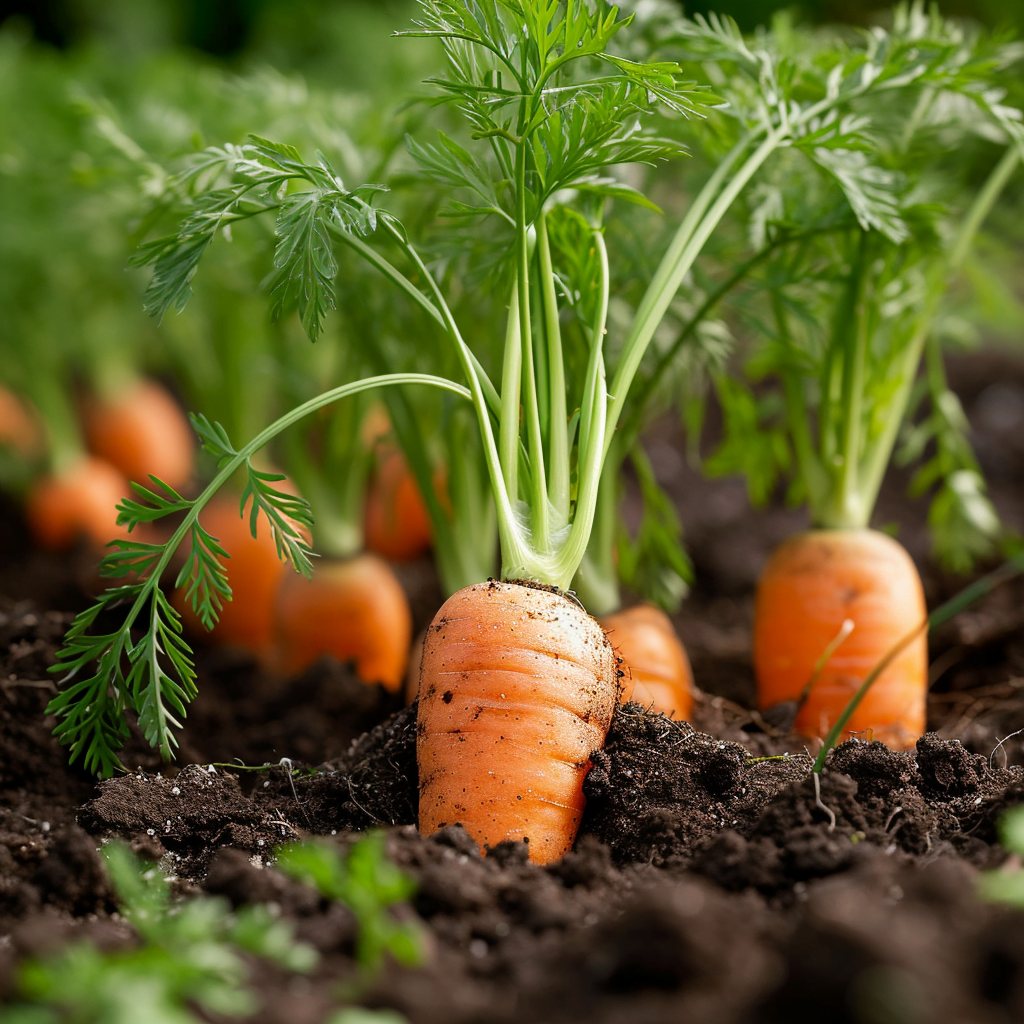
Preparing the Soil
Before planting your carrot seeds, it is essential to properly prepare the soil to provide an optimal growing environment for your carrots. This involves clearing the area, loosening the soil, and adding organic matter.
Clear the Area
Start by clearing the area where you plan to plant your carrots. Remove any weeds, rocks, or debris that may hinder their growth. By starting with a clean slate, you prevent competition for nutrients and ensure that your carrots have ample space to develop.
Loosen the Soil
Carrots have a long root system, so it is important to have loose, well-draining soil. Using a garden fork or tiller, loosen the soil to a depth of at least 12 inches. This will break up any compacted soil, allowing the carrots to grow straight and develop properly.
Add Organic Matter
To enrich the soil, incorporate organic matter such as compost or aged manure. This will improve soil structure, drainage, and provide essential nutrients for healthy carrot growth. Spread a layer of organic matter across the prepared soil and use a rake to mix it in thoroughly. This will help create a fertile soil bed for your carrot seeds.
Planting Carrot Seeds
With the soil prepared, it is time to plant your carrot seeds. Pay attention to the sowing methods, seed spacing, and seed depth to ensure successful germination and growth.
Sowing Methods
There are two main sowing methods for carrots: direct seeding and starting indoors. Direct seeding involves planting the seeds directly into the garden bed, while starting indoors refers to planting the seeds in containers or seed trays before transplanting them outdoors. Direct seeding is the most common method for growing carrots.
Seed Spacing
Carrots need enough space to develop their root systems without crowding each other. When planting, leave approximately two inches of space between each carrot seed. This will give them enough room to grow and prevent competition for nutrients and water.
Seed Depth
The depth at which you plant your carrot seeds is crucial for proper germination. Carrot seeds are small and require shallow planting. Sow the seeds at a depth of about ¼ to ½ inch. Remember to cover them lightly with soil and gently pat them down.
Providing Adequate Water
Water is a vital resource for carrot growth and development. Establishing a watering routine, monitoring moisture levels, and avoiding overwatering are essential steps in ensuring your carrots receive adequate hydration.
Establish a Watering Routine
Carrots require consistent soil moisture throughout their growing period. Establishing a watering routine is crucial for their overall health. Water the soil evenly and deeply, ensuring that the moisture reaches the root zone. Aim to provide approximately an inch of water per week, either through rainfall or irrigation.
Monitor Moisture Levels
Carrots prefer moist soil but are susceptible to rot if they sit in overly saturated conditions. To monitor moisture levels, insert your finger into the soil to a depth of about an inch. If the soil feels dry at this depth, it’s time to water. Regularly checking the soil moisture will help you adjust your watering routine accordingly.
Avoid Overwatering
While carrots need consistent moisture, overwatering can lead to problems such as root rot and mold formation. Avoid standing water and ensure proper drainage by making sure your garden beds have adequate drainage systems. To prevent overwatering, adjust your watering schedule based on rainfall and the moisture levels of the soil.
Mulching and Weeding
Mulching and weeding are essential steps in maintaining a healthy carrot bed. Utilizing organic mulch, preventing weeds from competing, and maintaining weed-free beds will help your carrots thrive.
Utilize Organic Mulch
Mulching helps regulate soil temperature, retain moisture, and prevent weed growth. Organic mulch, such as straw or shredded leaves, is an excellent choice for carrot beds. Apply a layer of mulch around the carrot plants, leaving a small space around the stems to prevent rot. Mulching also adds organic matter to the soil as it breaks down over time.
Prevent Weeds from Competing
Weeds can hinder the growth of your carrots by competing for nutrients, water, and sunlight. Regularly inspect your carrot beds and remove any weeds that appear. Be cautious not to disturb the carrot roots while weeding, as they are delicate.
Maintain Weed-Free Beds
Maintaining weed-free beds is crucial for the overall health and productivity of your carrots. Regularly inspect your garden and remove any weeds as soon as they appear. Mulching greatly reduces weed growth, but some weeds may still emerge. Consistent attention and diligence in removing weeds will help your carrots flourish.
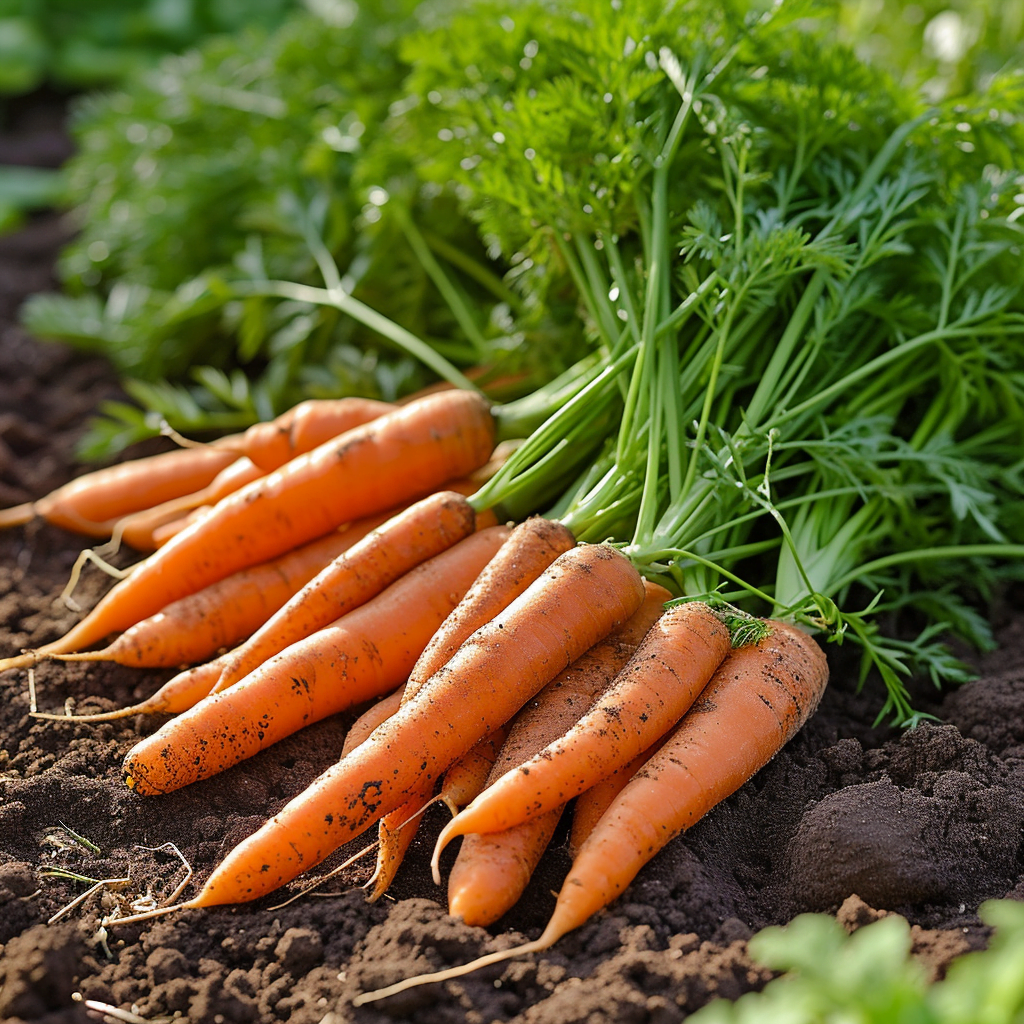
Thinning Carrot Seedlings
Once your carrot seedlings have emerged, thinning is necessary to ensure proper root development and prevent overcrowding. Understanding the importance of thinning, using appropriate techniques, and knowing the ideal time for thinning will contribute to the success of your carrot crop.
Importance of Thinning
Thinning is the process of removing excess seedlings to provide ample space for the remaining ones to grow. If carrots are not thinned, they will compete with each other for nutrients and space, resulting in stunted growth and irregularly shaped roots. Thinning allows the remaining carrots to develop fully and ensures a better harvest.
Thinning Techniques
To thin your carrot seedlings, carefully remove the weaker or overcrowded plants from the bed. Gently pull them from the soil, being careful not to disturb the roots of the remaining seedlings. Aim for a spacing of about two inches between each carrot plant.
Appropriate Time for Thinning
Carrot seedlings are typically thinned when they reach a height of about two inches. Thinning too early can disturb the remaining seedlings, while waiting too long can result in stunted growth. Observing your plants closely and thinning at the appropriate time will give your carrots the best chance for optimal growth.
Fertilizing Carrots
Carrots have specific nutrient needs to support their growth and development. Understanding these needs, choosing the right fertilizer, and applying it appropriately will promote healthy carrot plants.
Understanding Carrot Nutrient Needs
Carrots require a balanced supply of nutrients, particularly nitrogen, phosphorus, and potassium. Nitrogen promotes leaf and stem growth, while phosphorus supports root development and potassium enhances overall plant health. Additionally, carrots benefit from other micronutrients such as calcium and boron. Understanding the specific nutrient requirements of carrots will help you meet their needs effectively.
Choosing the Right Fertilizer
When selecting a fertilizer for carrots, opt for well-balanced options that provide the necessary nutrients. Organic fertilizers, such as compost or well-rotted manure, are excellent choices as they improve soil health and fertility over time. Alternatively, you can use a slow-release granular fertilizer specifically formulated for root vegetables. Always follow the manufacturer’s instructions when applying fertilizers.
Applying Fertilizer
To apply fertilizer, broadcast it evenly over the soil surface around your carrot plants. Be cautious not to let the fertilizer come into direct contact with the carrot foliage, as it may cause burn damage. Once applied, gently work the fertilizer into the top layer of soil using a rake or cultivator. Water the bed thoroughly after fertilizing to aid in nutrient absorption.
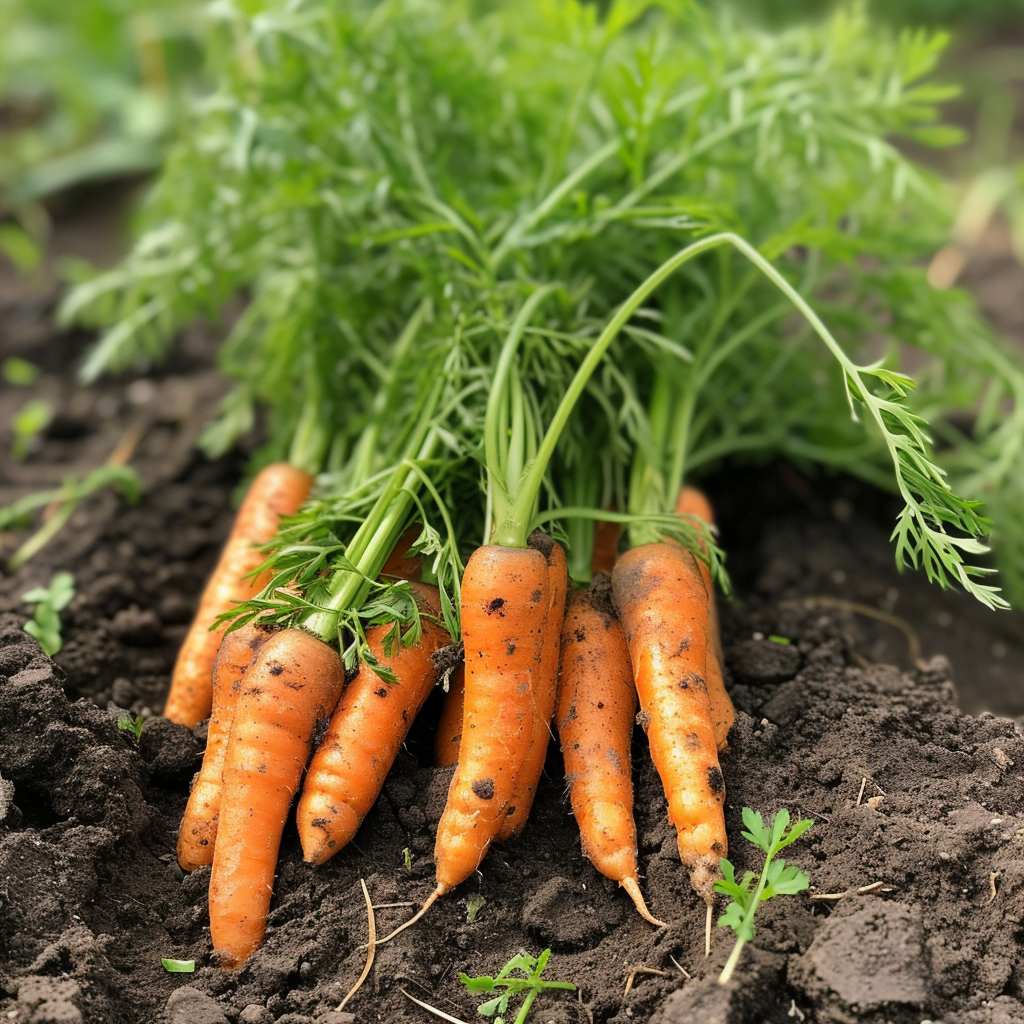
Protecting from Pests
Carrots are susceptible to various pests that can damage or even destroy your crop. Identifying common carrot pests, implementing organic pest control methods, and using physical barriers will help safeguard your carrots.
Identify Common Carrot Pests
Carrot pests include carrot rust flies, carrot weevils, aphids, and nematodes, among others. Carrot rust flies lay eggs in the soil near the carrot plants, and their larvae feed on the roots. Carrot weevils are small beetles that tunnel into the carrots and cause damage. Aphids can suck sap from carrot leaves, weakening the plants. Nematodes are microscopic worms that can cause stunted growth and deformities in carrot roots.
Implement Organic Pest Control
Organic pest control methods can help protect your carrots without the use of harmful chemicals. Companion planting is an effective technique that involves planting pest-repellent plants alongside your carrots, such as marigolds or chives. Additionally, introducing beneficial insects like ladybugs or lacewings can help control aphid populations. Regularly inspect your plants for signs of pests and remove them by hand or with a stream of water when possible.
Use Physical Barriers
Physical barriers can be implemented to prevent pests from reaching your carrot plants. Floating row covers made of lightweight fabric can protect your carrots from carrot rust flies and other flying insects. Make sure to secure the edges tightly to prevent pests from infiltrating. Additionally, using screens or mesh cages can protect your carrots from carrot weevils and other pests that might crawl onto the plants.
Harvesting Carrots
Knowing when to harvest your carrots, utilizing proper harvesting techniques, and employing suitable storage methods are crucial for preserving their quality and flavor.
Recognize Harvest Time
Carrots are typically ready for harvesting when they have reached the desired size and color. The ideal time for harvest varies depending on the carrot variety but typically ranges from 60 to 80 days after planting. Observe the color and size of the carrot tops above the soil to determine if they are ready for harvest. Carrots can usually be harvested when their tops have a healthy green color and reach a diameter of about 1 inch.
Harvesting Techniques
To harvest your carrots, gently loosen the soil around the base of the carrot plants using a garden fork or a trowel. Carefully lift the carrots out of the soil, grasping the tops near the crown, and pulling upward. Avoid pulling the tops alone, as this may result in snapping the carrots in half. Shake off any excess soil and trim the tops if desired, leaving about an inch of foliage to prolong storage life.
Proper Storage
After harvesting, it is important to store your carrots properly to maintain their freshness and flavor. Remove any damaged or diseased carrots from the batch before storage. Carrots can be stored in perforated plastic bags or in a cool, dark place with a temperature range of 32 to 40 degrees Fahrenheit. Alternatively, you can store them in airtight containers with layers of slightly damp sand or sawdust to keep them from drying out.
Troubleshooting Common Issues
While growing carrots can be rewarding, they are susceptible to various issues that may affect their growth and quality. Understanding how to deal with carrot diseases, addressing common growth problems, and preventing carrot cracks and splits will help you overcome these challenges.
Dealing with Carrot Diseases
Carrot diseases such as carrot leaf blight, powdery mildew, and root rot can cause significant damage to your crop. To prevent diseases, practice crop rotation by planting carrots in a different area of your garden each year. Additionally, ensure proper drainage, avoid overwatering, and provide adequate spacing between plants to promote air circulation. If diseases do occur, remove and destroy affected plants to prevent further spread.
Addressing Common Growth Problems
Carrots may face growth problems such as forked or deformed roots, poor germination, or stunted growth. These issues can stem from various factors such as compacted soil, insufficient watering, overcrowding, or nutrient deficiencies. To address these problems, ensure proper soil preparation, provide consistent moisture, thin seedlings, and fertilize appropriately. By addressing the underlying causes, you can promote healthier growth and development of your carrots.
Preventing Carrot Cracks and Splits
Carrots can experience cracks and splits due to fluctuations in moisture levels. Rapid moisture changes, such as heavy rainfall followed by drought, can cause the carrot roots to expand and contract rapidly, leading to cracks or splits. To prevent this issue, provide consistent moisture through regular watering and mulching. Harvesting carrots promptly when they reach maturity can also help prevent cracks and splits.
In conclusion, growing carrots at home can be a rewarding and enjoyable experience. By choosing the right carrot varieties, preparing the soil properly, providing adequate water and nutrients, protecting from pests, and addressing common issues, you can successfully grow a bountiful harvest of flavorful and nutritious carrots. Remember to follow the techniques and tips provided to ensure the best results. Happy carrot growing!
